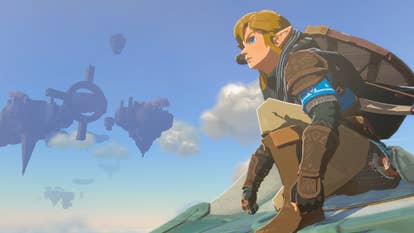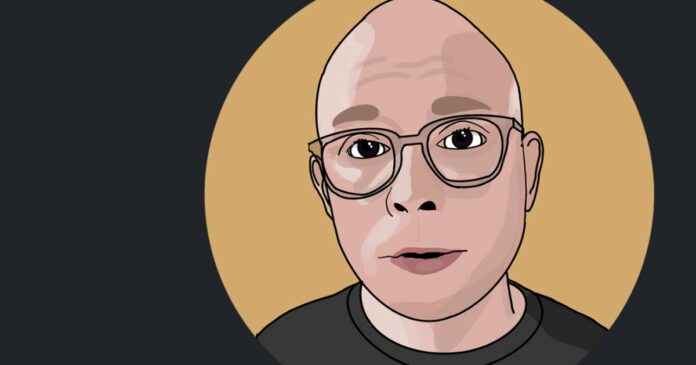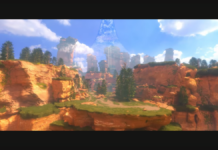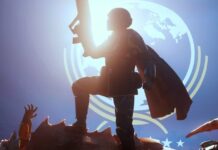I both hate and love geolocation games. Take GeoGuessr. I hate to play it myself because I’m clueless at it. But I love to watch it being played by others. It suddenly opens up. It becomes something thrilling.
GeoGuessr is a geolocation game that runs on a browser or on your phone. Load it up and it shows you a snapshot from a Google Street View camera or somesuch, taken from somewhere around the world. It could be from anywhere. You have to use what’s visible on the screen to work out where you think you are on Planet Earth, and then you drop a pin into a map with your guess, and the game tells you how close you actually were. It’s simplicity itself in theory, but playing it, and playing it well, is the absolute opposite of simple.
To explain the problems I face with GeoGuessr, I did what I absolutely hate to do and played a round this morning. The image loads: a street terminating in what looks like a park. Urban – a capital somewhere given the scale and density of the buildings, the width of the streets. Cream buildings, a little dirty and scuffed. Anonymous modern cars. Definitely Europe. Could be Fitzrovia, but could be Paris, or Budapest, a city that I know often stands in for Paris on film. And if it could be Budapest couldn’t it be Bucharest? Prague? Not Bratislava – the scale is all wrong. What a wonky list! How addled and misdirected by the whims of memory. I take a punt on the blurred license plates and guess London. And guys? It was Paris, 339 km away from where I dropped my pin.
That’s playing GeoGuessr. Watching it, though? Or watching any of the geolocation geniuses on TikTok who play this and similar games at a dizzyingly high level? I could watch this stuff for hours. There’s one English guy I like, with big specs and permanent bedhead. He is so fast. He is so inhumanly fast. He opens the image, mutters “Mauritius”, or somesuch, checks the road, zooms in on a sign I can’t even see, and then drives the pin home. A win, offset by mere yards. And all in less time than it takes me to sigh.
This is how it is with a lot of geolocation people. They’re playing a game, but you, you on the other side of the screen are watching something akin to a magic trick. I watch lots of magicians on TikTok, and the effect is eerily similar. Speed and beauty combine, and then you never learn how it was all done. You’ve seen something delicate and unlikely, but then you move on. And, truth be told, in time I move on too.
But there’s one geolocation TikToker who I will always stick with. Someone whose videos I have never, ever scrolled past. This is Josemonkey, and he finds people who ask to be found. People send in a video saying, “Find me Josemonkey,” – this system is in place so that Josemonkey isn’t an unwitting accessory to stalking or witness protection shenanigans – and then Josemonkey dutifully finds them. But more than that, he takes the game and turns it into something else, something more precious. He slows it down. He explodes the thinking process. And in doing so he mints drama from the least dramatic situation imaginable: a bunch of people who already know where they are. Josemonkey! He’s our Sherlock Holmes of the car park. He’s the Daryl Zero of state licence plate designs. He takes a game and he turns it into a story, an adventure. And one day, watching one of his videos, I realised: I want to know more.
Weeks later and it’s slightly weird to find myself staring at Josemonkey through a Google Meet window on my laptop. I’m starstruck certainly, but I’m also just surprised. Some part of me is dazzled that he is real.
I suspect that this is because Josemonkey’s such an unusual candidate for TikTok superstardom. He’s a fascinating contrast to the parasocial relationships that TikTok seems determined to create, where people you’ll never meet ask you to watch them cook or study for an exam or just get ready with them in the morning as if you were perched, some kind of digital leprechaun, in their bathroom cabinet.
Josemonkey is very different. He is calm and kind and softly spoken and precise. He speaks quickly, but he makes his words count. More than that, while his gentle, contained demeanor often reveals a great deal of wit and charm – and his editing, with its fast cuts and inserts, is definitely alive to the comedic potential of his work – it also speaks to me of a certain unknowableness, a carefully employed reserve. (Not for nothing, I suspect: a lot of Josemonkey’s work is there to educate people on internet safety and privacy.) He reminds me, at times, of silent movie stars like Buster Keaton, people who entertain us brilliantly, but from a polite, professional distance. Even that deftly chosen Josemonkey monologue, always unfolding with cool precision, maintains this. Set phrases becoming almost ritualistic: “So what can we see?” he asks at the start of a video. “And guys, that was it,” he announces at the conclusion of a search.
So what can we see? How did this all get started? Josemonkey first heard about geolocation as an interesting potential hobby. He’d follow Twitter accounts that would post geolocation challenges: here’s a picture, can you tell us where it is? Sometimes there would be a prize, but there didn’t need to be a prize. The process itself was interesting, game-like, worth spending time on.
“It was interesting to me, because I feel like I’m always naturally inclined to ask questions about photos and videos when I see them,” Josemonkey tells me. “Like, even if it was somebody I knew sharing a photo. If they didn’t say where it was, I would often wonder: where is that? And I would wonder, well, can I figure it out?” He decided to try and find out, and was surprised to discover that sometimes you can figure it out. Sometimes you can use what’s in a photo to work out precisely where it was taken.
GeoGuessr followed. “It was just a fun kind of puzzle to challenge myself,” he explains. “But honestly, I didn’t really have a big outlet for this other than, you know, playing GeoGuessr, or those Twitter [geolocation] challenges.”
I want to know: when he started to take geolocation seriously, when he started to find people who asked to be found, why did he decide to slow things down, to turn each challenge into a story rather than a blunt display of skill? “Honestly,” he says,”I don’t know that I necessarily did it in an attempt to differentiate myself from from others.” A pause. “I mean, I was certainly familiar with other popular GeoGuessr players like Trevor Rainbolt, who’s obviously very well known.”
Josemonkey was familiar with Rainbolt, but feels there are a handful of differences in his approach. “The first,” he tells me, laughing, “is that I’m an explainer. I like to explain things. I talk a lot. I mean, my kids will tell you that. Sometimes we joke about the fact that my kids will ask me a question about something, and maybe they would expect the short answer, and then I launch into Daddy’s TED talks, where I explain things for, you know, 45 minutes.” He pauses. “I think that they enjoy them sometimes. Sometimes they’re: Okay, Dad, that was a longer answer than I needed.”
So yes, Josemonkey is an explainer. But there’s more to it than that. “GeoGuessr as a game,” he says, “which I enjoy and find fascinating, but to compete at the highest levels there, there’s a few things to keep in mind.
“One: those folks have a lot of very specific and obscure details, often just details about Google Street View, and how those photos are unique in different ways. Like: you can see the antenna on the car in this country. It’s literally stuff like that. And not only do they know these things, but they can bring them up very quickly in their mind. Oh, this is France, and it’s on this road in France, because…”
Josemonkey isn’t particularly good at recalling all that from memory, he tells me. But also, he enjoys research as much as he enjoys explaining. “And when you play Geoguessr, you’re not really supposed to do research,” he says. “You’re supposed to just use what you’re seeing and what you know. I mean, it’s cheating in GeoGuessr if over in another window you’re surfing for what you see!” Cheating, yes, but for some people that’s where the actual fun is.
And so the Josemonkey Approach came together. Research is in. “I’m free to look up whatever I see,” he says. Super-speed is out. “And I don’t need to do it quickly. I’m not competing against somebody else in a timed match, where I need to do it as fast as I can. So it allows me to slow the process down, think it through and do the research to find the place. And that’s the thing that is satisfying for me. And it’s why I like to explain it.”
There’s another part of the mix too. “I think that it does appear like a magic trick when you do it so quickly,” he tells me. “And what I don’t like about that is, people are very inclined to say it’s fake, and a setup. And I feel like, to some extent, when I explain it, and walk you through exactly how I did it, then I think it helps people to see like, “Oh, wow, this guy really figured it out.” It’s not just some goof here or, you know, a gimmick where somebody told them where it was beforehand.” Does that mean people don’t accuse him of cheating? A resigned look: “People still accuse me of lying about it and saying that I make up the stories afterwards or whatever. So.”
Here is the thing, though: because of this approach, the best Josemonkey videos really are a story. A video of someone in a car park – find me Josemonkey! – might lead in a hundred different directions. It might have dead ends, asides – Josemonkey calls these side quests – and the solution might come down to license plates or recycling bin design. It might come down to a perusal of objects in the background, or an understanding of whether the image has been flipped. It could be a pin on someone’s shirt or an IHOP in the distance.
On that last point, Josemonkey does a lot of what you might call Triangulation via Cheesecake Factory. He’ll identify a business sign and then identify different businesses nearby, and then cobble together searches of where these businesses appear close together. Sometimes there will be a little micro-narrative as a blurry business sign is eventually identified over the course of a video. Clunking gear change: I read recently, in a description of Robert Burton’s The Anatomy of Melancholy, that the Anatomy was a novel, really, but the characters in it were all books. In Josemonkey’s world, the characters are often local chains of convenience stores, or advertisements for dental hygienists in Wichita.
Crucially, while the methods repeat themselves over time, each video feels distinct, with its own quirks, its own discoveries, its own kinks delivered by the landscape or the vagaries of the horizon. I ask Josemonkey whether it still feels like a game to him, and whether he still enjoys the challenge as much as he seems to.
“It’s really just the thing I like to do,” he laughs. “Unless you’re playing something like GeoGuessr, there’s not really a lot of ways to exercise this skill set… I am in a fortunate situation. Once I started doing this, there was an interest, and people just started sending me these videos. And now I’m like: this is great. I have this seemingly endless supply of puzzles to solve.”
As for the geolocation mindset, can it be turned off? Or has it slowly become the lens through which Josemonkey sees the rest of the world?
“I would say that because it was an interest of mine, I did this to a certain degree before,” he says after a thoughtful pause. “If I was watching a movie or something like that, I might be trying to figure out where it was set.” He laughs. “But it is just dialled up to 11 at this point. It is difficult to turn it off. If I’m watching a TV show and there’s an outdoor scene, I’m always trying to figure it out. And it can be distracting. Like, I stopped paying attention to what’s going on because I’m trying to read what the sign in the background says.”
And it can spill outwards. “I mean, I do these almost every day,” he says, “so every single day I’m looking at videos, looking at little clues in the background to figure out where they are. And so sometimes I will be just out in the world, I’m driving somewhere. And as I’m driving, I find that I’m doing the same thing. And obviously, it’s silly: I don’t need to figure out where I am, I know where I am! Hopefully I do!”
Are there pluses to this? Josemonkey feels he notices more than he used to. It is, in this sense, a distinct way of being in the world. “I think I notice more details more automatically than I used to, because I’m just sort of always looking for them,” he says. “I’m more aware of things that I didn’t pay attention to before. For example, I know where all of the electrical transmission lines are in my general neighbourhood. When I pass them I take note of them now, and I feel like I didn’t see those before.”
Electrical transmission lines. That may seem unimportant, but as you’re probably aware, there’s a whole industry forming at the moment built around noticing, being back in the moment, paying attention to what’s happening right now. TikTok, again, is filled with videos of rain dripping from willows, traffic oozing through wet Manhattan streets: slow down and notice the beauty of our surroundings, they all say. Books promise to teach us how to pay attention, how to ground us back in the world – a world that has been pushed aside, perhaps, by things like TikTok, by self-help books. This kind of chummy, open-ended willingness to see things going on around us that Josemonkey quietly prompts people towards is perhaps a very valuable thing.
Crucially, geolocation is still surprising to him, and still leads to surprising places. Certain videos become more predictable purely because, having done so many, Josemonkey’s sense of which clues are most likely to lead to a result is much stronger. “But occasionally, I get thrown for a loop and I’ll end up in totally the wrong place. I mean, that happens.” When it does, it’s crucial to preserve these mis-steps as part of the story. “And it’s really important to me, you know, to share even the wild goose chases and dead ends that I ended up on in these hunts that I do,” he says. “I like to be transparent. And also, it lends something to the very real storytelling I’m doing.”
He thinks for a second, arranging thoughts. “I prefer to tell you a story that’s true rather than one that is super-fascinating and interesting. Like, I hope that it’s coincidentally both, right? But I would rather tell a true story. So if that means telling you that I looked at 100 wrong places before I realised I was in the wrong country, then I’ll tell you that.” I love this, and it suggests a deep awareness of storytelling that is apparent in all the videos he makes: underneath it all, the true story is always the more interesting story.
A few months back, Josemonkey was stumped with a video that he had decided was recorded in some kind of tailgating environment. There were people in the background messing with objects that he could not identify. He broke off for a bit and went to play the latest Zelda. A few minutes into Tears of the Kingdom, he found a hot air balloon in parts laid out across Hyrule, and when he eventually returned to the tailgating video, he realised it was a hot air balloon he’d been looking at.
That lead to a quick conclusion for the video in question, but the reason I love this story is because Zelda, particularly the recent Zeldas, given their preoccupations with landscape and nature, seem like such Josemonkey games. It made me wonder at the time: is Josemonkey a big fan of video games? And is he drawn to the same things in them that he is in geolocation?
“I do think of myself as a gamer,” he says. “I wish I had more time to play games than I do. I feel like I hear a lot of people my age saying they end up buying games and intending to play them and then they have a shelf full of games that they never play. And I am definitely in that boat.” But he plays Zelda, sometimes alone and sometimes with his wife, passing the controller back and forth. He loves Star Wars games – if he ever appears in a video without a Star Wars T-shirt, the comments want to know why – and he was properly into Guild Wars a few years back, as well as Guild Wars 2. Other games, I can’t help but note, in which the environment is a major draw.

What he loved, though, and this is deeply unsurprising, was the memory chain of quests from Breath of the Wild. These sent Link and the player out across Hyrule with a bunch of photos, and the task was to find the place where the photos were taken. “The whole memories framework that they had, oh: it is geolocation,” he says. “It’s exactly what I like to do. And it’s so funny, I actually posted a video about this. I was saying that I had this idea that maybe I can make a geolocation video game. And I realised that once I described it, I was describing the memories in Breath of the Wild.”
In a game of wonderful moments, those memory tasks feel special, even if you don’t spend your days finding people who ask to be found. For me, it’s because they place you in Hyrule and root you quite strongly to the ground. You’re deep into the landscape because you’re looking around for specific parts of it. I feel doubly engaged, doubly contained at these moments.
And that sense of being in landscapes touches on something I’ve wanted to ask Josemonkey about since I first saw his videos. It’s to do with geolocation and how it offers people who love it a particularly expansive sense of the planet. Josemonkey talks a lot about car parks, particularly in American videos, and I wonder: does playing his puzzles give him a sense of what the majority of the planet now looks like? Is Earth trending towards car park? Are we developing a planet where huge chunks of it increasingly look similar?
“It’s something I think a lot about,” Josemonkey says, “because sometimes when you start looking at one of my videos, on first glance, it seems like, well, this could be anywhere. This looks like Anywhere USA. People have noted, various places in the United States can look very, very similar.
“And it is refreshing when there are regional differences. Because they’re helpful in figuring out where you are. But also just because it’s a change of scenery. It can get a little bit tedious to look at yet another parking lot or a car park, in another place that looks just the same with all the same stores.
“So yeah, I think that there’s definitely some things to pull from that. Depending on your perspective, you may say, well, in some ways, it’s good, because there’s this familiarity… But then a lot of people, I think, see that as not a good thing, this homogenisation of everything. The local flavour of different places is sometimes what makes them interesting.
“I think it’s definitely something I’ve observed. I think that there’s still a good amount of variation around, depending on where people are sending videos from. And that’s, and that’s always nice to see.”
He pauses for a second, and then says something surprising. “Honestly, it’s really interesting to me to see some of these places. I’m not really well-travelled, quite honestly. I’ve not been to the vast majority of the places that I have located. So it would be really interesting to me to go to these places, and it’s nice to be able to see them because I have not been.”
This ties into something I’ve been waiting to ask Josemonkey. As our interview draws to a close, I produce my copy of Skyfaring, by Mark Vanhoenacker. It’s the memoir of a BA airline pilot, who writes:
“The most curious aspect of the pilot’s life may not be that we work in the air. It is that our world on the ground… is so enormous. The job induces an almost planetary sensibility, a mental geography that rounds countries and continents as easily as you follow turns in a path through a familiar wood.”
I read that, and I look at the work Josemonkey does, the videos he makes, and the way that he seems to be so deeply, cheerfully comfortable in the world. When he’s dropped into a location, he’s so quick to to start orienting himself, to explore places and have interesting things to notice about them. And I feel that, well-travelled or not, he must have seen more of the world than most people. He must have more of a sense for it. Has it granted him what Vanhoenacker refers to as a ‘planetary sensibility’?
“I like that quite a lot,” he says, turning the phrase over. “That resonates for me to a degree. I feel like in some ways, it’s funny, it can do both things. Seeing all these different places, and all these different people around the world can, in some ways, make it feel smaller and help me to feel like we’re kind of more connected. But at the same time, it is so vast!
“I mean, I was just saying the other day when I was doing a location in South America, the scale of the countries in South America? It’s just mind blowing. And so somebody in the comments shared that fact I’ve seen before about how the northernmost part of Brazil is closer to Canada than it is to the southernmost part of Brazil. It’s crazy, but it’s true. And when you say things like that, you just realise how vast things can be.
“Sometimes, if I know a general area that I’m looking for something in, if it’s pretty small, you can just sort of pan around on a satellite view and look for things to orient yourself and maybe find it that way.” He laughs. “Sometimes I’ll start doing that. And then I’ll realise just how big the area is, just how impossibly big it is. It is sort of awe inspiring and humbling to see that.
“I don’t know what to say other than that. It really is eye-opening occasionally when you realise just how big the Earth is, although I guess it’s also small in the grand scheme of things.” He nods. “But it’s all relative, right?”
And guys, that was it.
www.eurogamer.net







